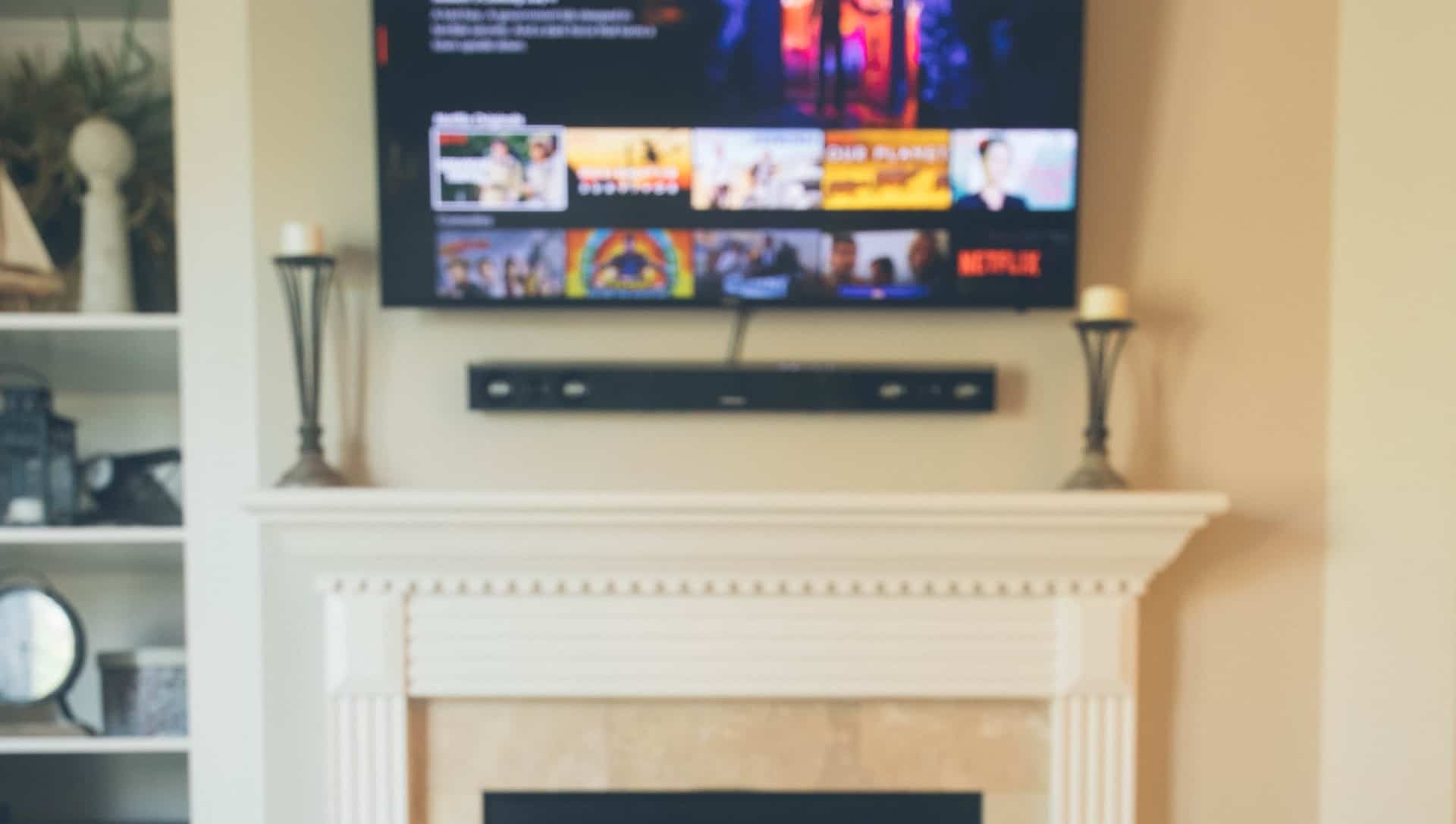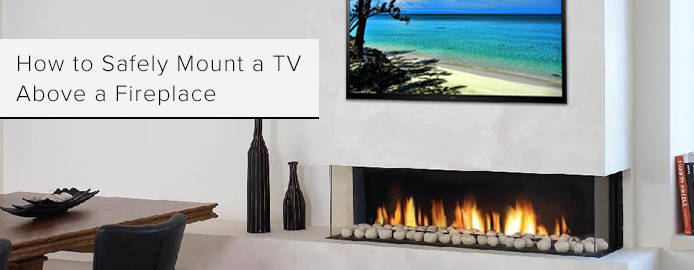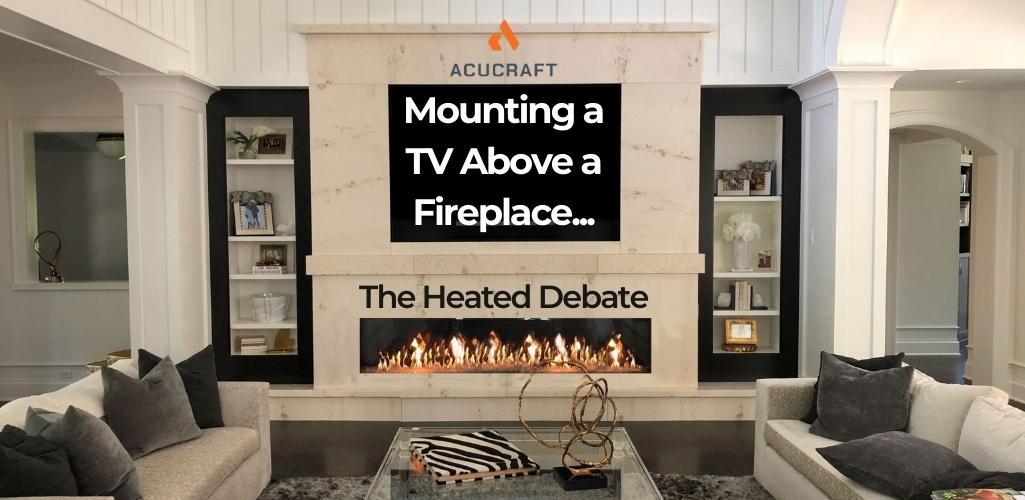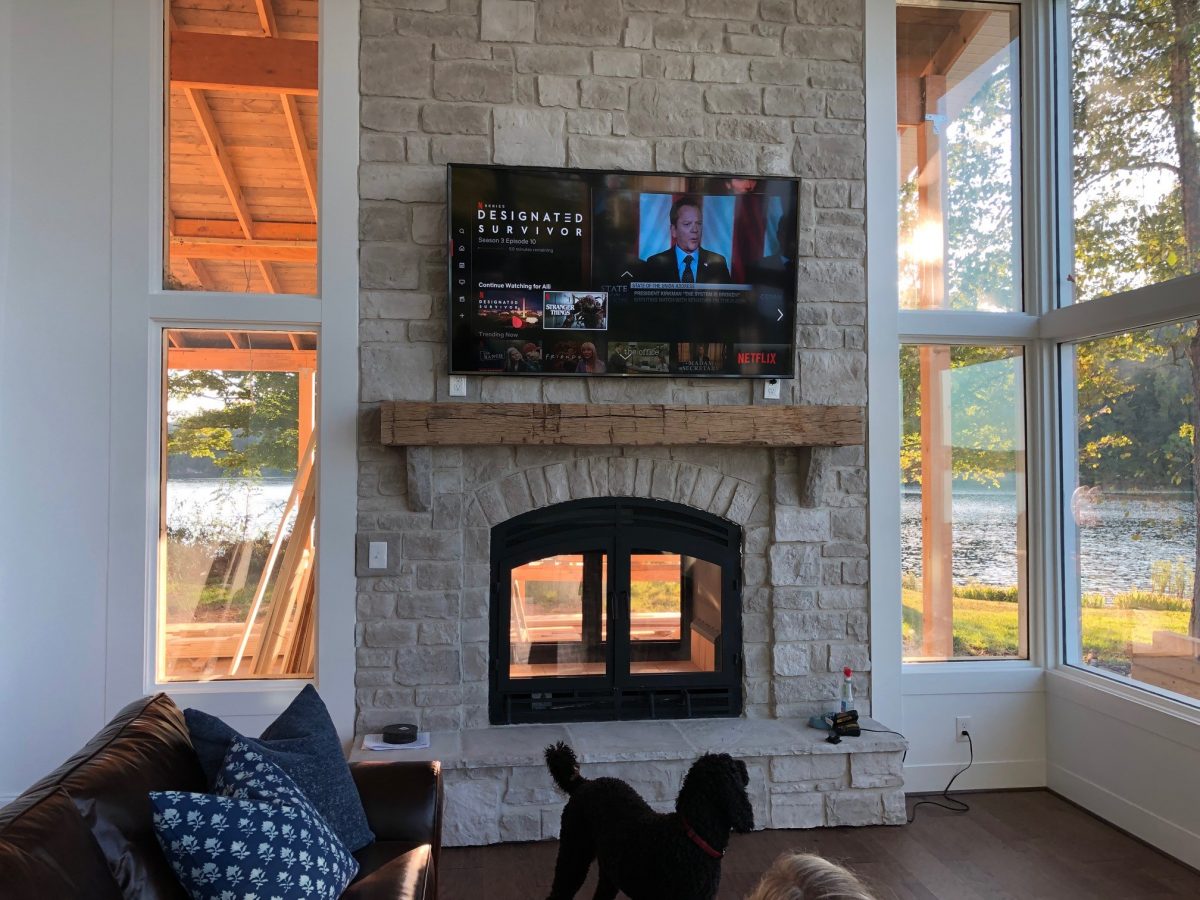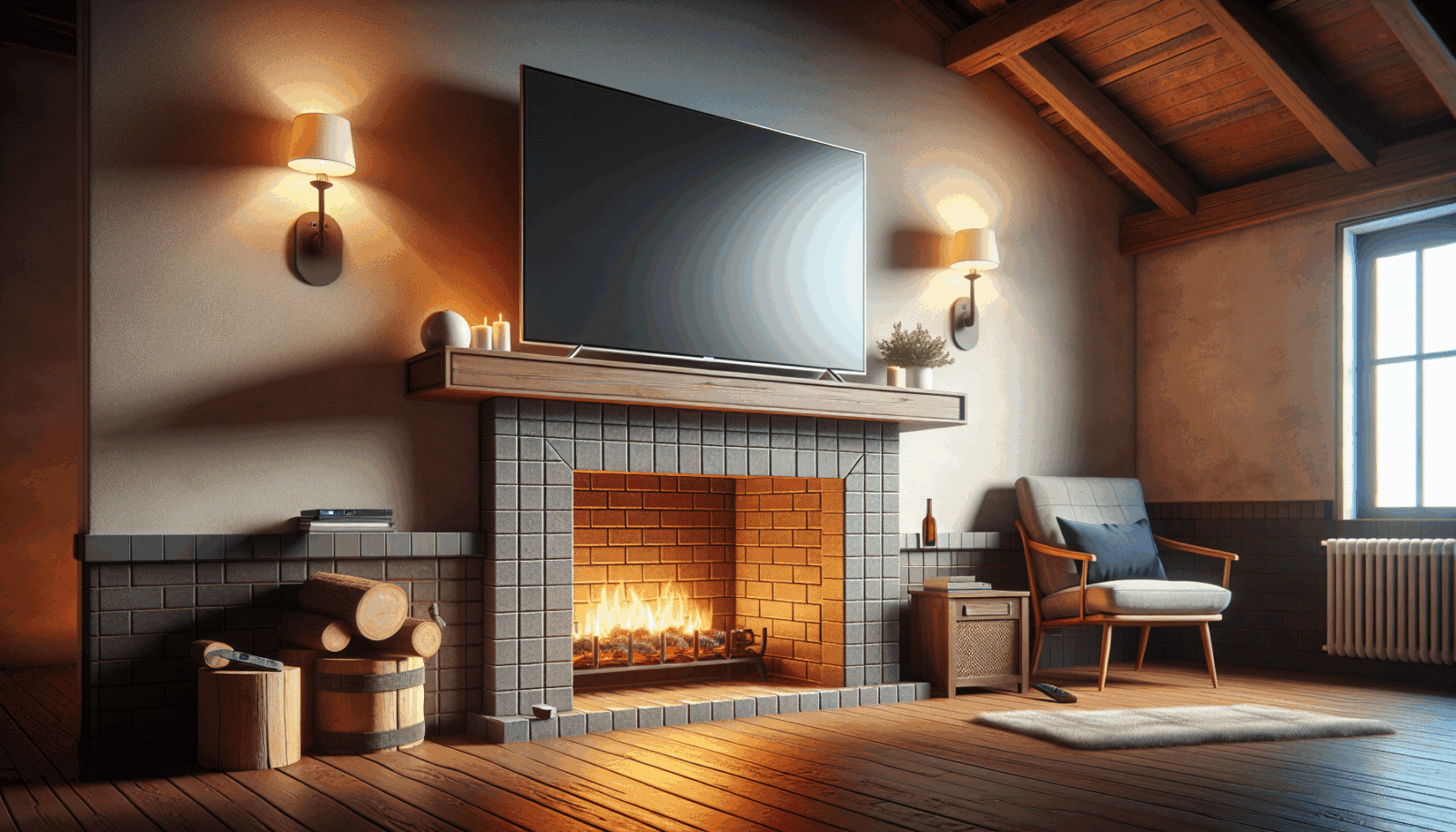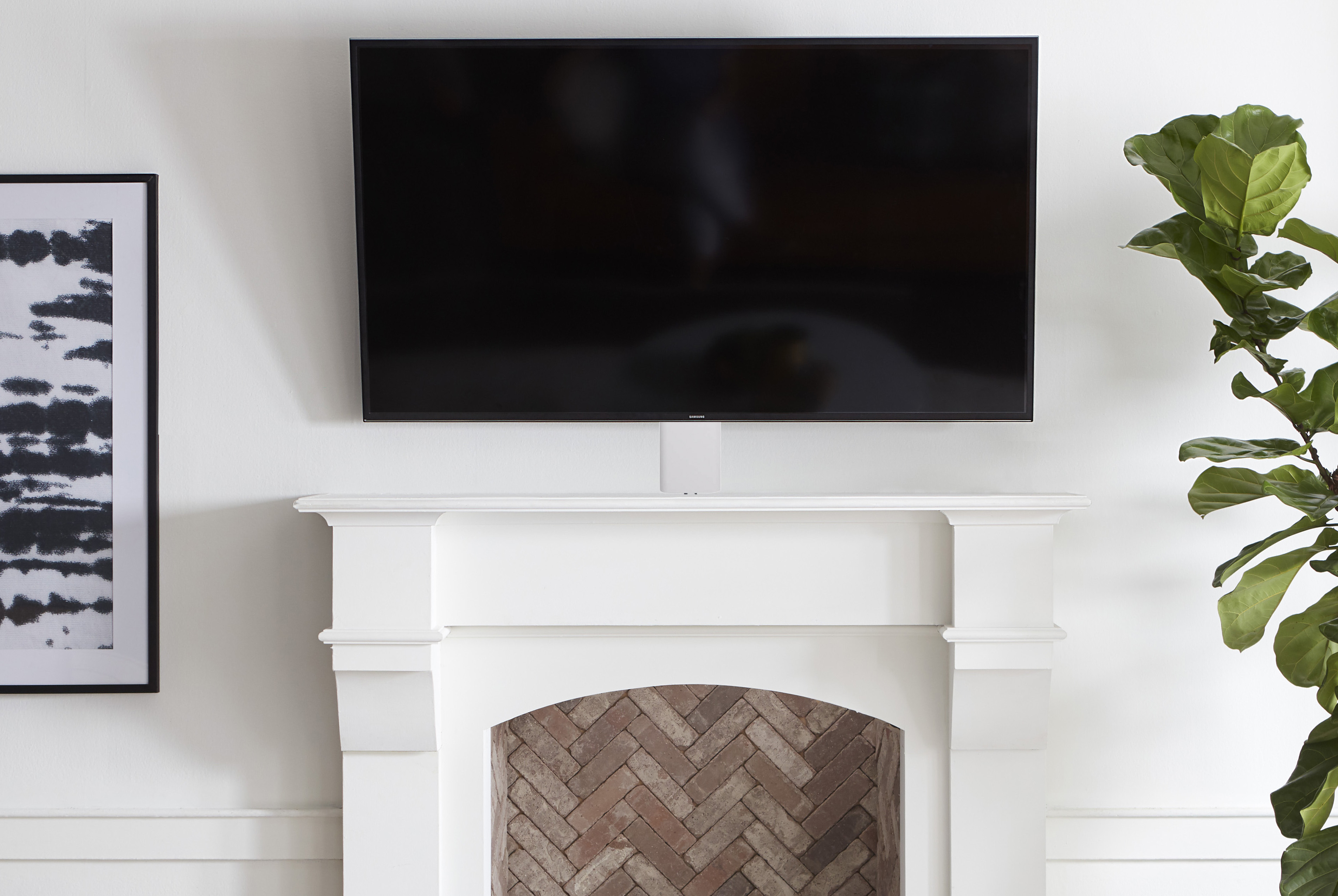How To Safely Mount Tv Over Fireplace
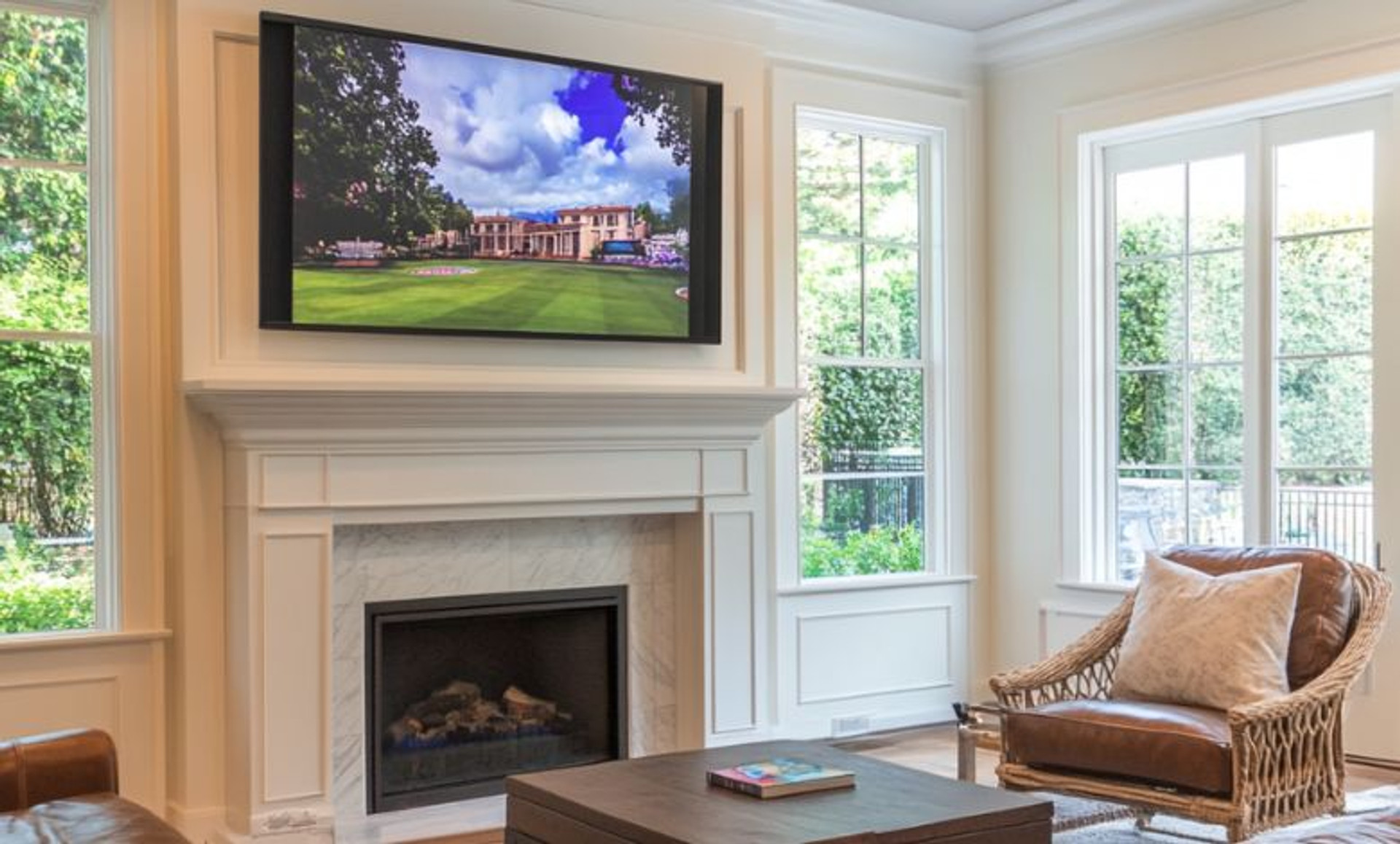
Safely Mounting Your TV Over a Fireplace: A Guide to Energy Efficiency and Smart Integration
Mounting a TV over a fireplace is a popular design choice, but it presents unique challenges, particularly when considering energy efficiency. Heat rises, and excessive heat exposure can damage your TV and impact your heating and cooling costs. This guide provides a comprehensive approach to safely mounting your TV while minimizing energy waste and maximizing smart home integration.
Assessing the Risks and Planning for Safety
Before you even consider mounting your TV, you need to evaluate the potential risks. The primary concern is heat. Fireplaces, especially traditional wood-burning models, can generate significant heat, potentially damaging the TV's internal components, shortening its lifespan, and even voiding its warranty. Also, consider the viewing angle and proper ventilation behind the TV.
Here's a breakdown of key considerations:
- Fireplace Type: Gas fireplaces generally produce less heat than wood-burning fireplaces. Electric fireplaces produce the least amount of heat, but placement is still important.
- Mantel Protrusion: A sufficiently deep mantel can deflect heat away from the TV. A good rule of thumb is at least 8 inches of depth.
- Distance from Firebox: The further the TV is from the firebox, the better. A minimum of 12 inches is recommended, but more is always preferable.
- TV Size and Weight: Ensure the mounting bracket is rated to handle the TV's weight, plus a safety margin. Choose a bracket specifically designed for fireplace installations.
- Wall Construction: Determine the wall's structure (drywall, brick, stone) and choose appropriate mounting hardware. For brick or stone, you'll need specialized anchors and drilling techniques.
- Cable Management: Plan for routing power and AV cables to the TV. Consider in-wall wiring to conceal cables and improve aesthetics.
Mitigating Heat: Shielding Your Investment
The key to a successful TV-over-fireplace installation is managing heat. Here are several effective strategies:
- Mantel Shield: Installing a heat shield above the mantel can deflect rising heat. These shields are typically made of metal and can be custom-fabricated to fit your fireplace. Consider materials like aluminum or stainless steel for their heat-reflective properties.
- Recessed Niche: Building a recessed niche above the fireplace can provide additional insulation and distance from the heat source. This is a more involved project but offers superior protection.
- Tilting Mount: Using a tilting mount allows you to angle the TV downwards, improving the viewing angle and potentially reducing heat exposure to the screen.
- Ventilation: Ensure adequate ventilation behind the TV. Avoid blocking vents on the back of the TV, and consider installing small ventilation fans to circulate air.
- Smart Thermostat Integration: Integrate your smart thermostat with a temperature sensor placed near the TV. This allows you to monitor the temperature and adjust the thermostat accordingly to prevent overheating the area near the TV.
Data Point: A study by the National Renewable Energy Laboratory (NREL) showed that proper ventilation behind electronic devices can reduce operating temperatures by up to 10°F, potentially extending the lifespan of the device.
Choosing the Right Mounting Hardware
Selecting the correct mounting hardware is crucial for safety and stability. Don't compromise on quality; invest in a heavy-duty, UL-listed mount specifically designed for fireplace installations.
- Full-Motion Mount: Offers maximum flexibility, allowing you to tilt, swivel, and extend the TV for optimal viewing. Ideal for rooms with multiple seating areas.
- Tilting Mount: Provides a limited range of tilt adjustment, suitable for reducing glare and improving viewing angles.
- Fixed Mount: The simplest and most affordable option, but offers no adjustability.
Important Considerations:
- Weight Rating: Ensure the mount's weight rating exceeds the TV's weight by at least 20%.
- VESA Compatibility: Verify that the mount is compatible with the TV's VESA (Video Electronics Standards Association) mounting hole pattern.
- Anchor Type: Select anchors appropriate for your wall type. For drywall, use toggle bolts or molly bolts. For brick or stone, use masonry anchors.
Energy Efficiency and Smart Home Integration
Mounting your TV over the fireplace presents an opportunity to enhance your home's energy efficiency and integrate smart home technologies. Here's how:
- Smart Thermostats: Use a smart thermostat to automatically adjust the temperature based on occupancy and time of day. Some models even offer zone control, allowing you to independently control the temperature in different areas of your home. This can minimize energy waste when the fireplace is not in use.
- Temperature Sensors: Place a temperature sensor near the TV to monitor heat levels. Connect the sensor to your smart thermostat, so it automatically lowers the thermostat setting when the temperature reaches a certain threshold, reducing the need for excessive cooling.
- Smart Plugs: Use smart plugs to control the power to your TV and other electronics. This allows you to remotely turn off devices when not in use, eliminating phantom energy loads.
- Energy-Efficient TVs: When purchasing a new TV, look for Energy Star certified models. These TVs consume less energy than standard models, reducing your overall energy consumption.
ROI Example: A smart thermostat can save you approximately 10-12% on heating costs and 15% on cooling costs annually. In many regions, local utility companies offer rebates on Energy Star certified smart thermostats, further reducing the upfront cost.
Comparison: Non-Energy Star TVs can consume up to 30% more energy than Energy Star certified models, especially during standby mode. Choosing an Energy Star TV is an investment that pays off in the long run.
Step-by-Step Mounting Guide (General Outline)
Disclaimer: This is a general outline. Always consult the manufacturer's instructions for your specific TV and mounting bracket.
- Gather Your Tools: Drill, level, stud finder (if applicable), measuring tape, pencil, screwdriver, socket wrench, safety glasses.
- Locate Wall Studs (If Applicable): Use a stud finder to identify wall studs. Securely mounting the bracket to studs provides maximum stability. If mounting on brick or stone, skip this step.
- Mark Mounting Points: Use the mounting bracket as a template to mark the mounting hole locations on the wall. Ensure the bracket is level.
- Drill Pilot Holes: Drill pilot holes at the marked locations. Use appropriate drill bits for your wall type (wood, drywall, brick, stone).
- Attach Mounting Bracket: Secure the mounting bracket to the wall using the appropriate hardware (lag bolts for wood studs, masonry anchors for brick/stone). Ensure the bracket is firmly attached.
- Attach TV to Mount: Attach the TV mounting plates to the back of the TV, following the manufacturer's instructions.
- Hang TV on Bracket: Carefully lift the TV and hang it on the mounting bracket. Secure the TV to the bracket according to the manufacturer's instructions.
- Connect Cables: Connect all necessary cables (power, HDMI, etc.).
- Cable Management: Organize and conceal cables using cable ties, cable sleeves, or in-wall wiring.
- Test and Adjust: Turn on the TV and test all inputs. Adjust the TV's position as needed to achieve the optimal viewing angle.
When to Call a Professional
While many homeowners can successfully mount a TV over a fireplace, certain situations warrant professional assistance:
- Complex Wall Construction: If you're dealing with unusual wall construction (e.g., plaster, lathe, non-standard framing), it's best to consult a professional.
- Electrical Work: If you plan to run new electrical wiring or modify existing outlets, hire a licensed electrician.
- Gas Fireplace Modifications: Any modifications to a gas fireplace should be performed by a qualified gas technician.
- Lack of Experience: If you're not comfortable working with power tools or lack experience with home improvement projects, hire a professional installer.
“Consulting with a qualified HVAC contractor and a licensed electrician can help ensure the safe and efficient integration of your TV with your home's heating and cooling systems.”
Conclusion
Mounting a TV over a fireplace requires careful planning and execution to ensure safety, prevent damage to your TV, and minimize energy waste. By following the guidelines outlined in this article, you can create a stylish and energy-efficient entertainment setup that enhances your home's comfort and reduces your energy bills. Remember to prioritize safety, choose the right equipment, and integrate smart home technologies to maximize energy savings and convenience. By taking a holistic approach to this project, you can enjoy the benefits of a beautiful and functional living space without compromising energy efficiency.

